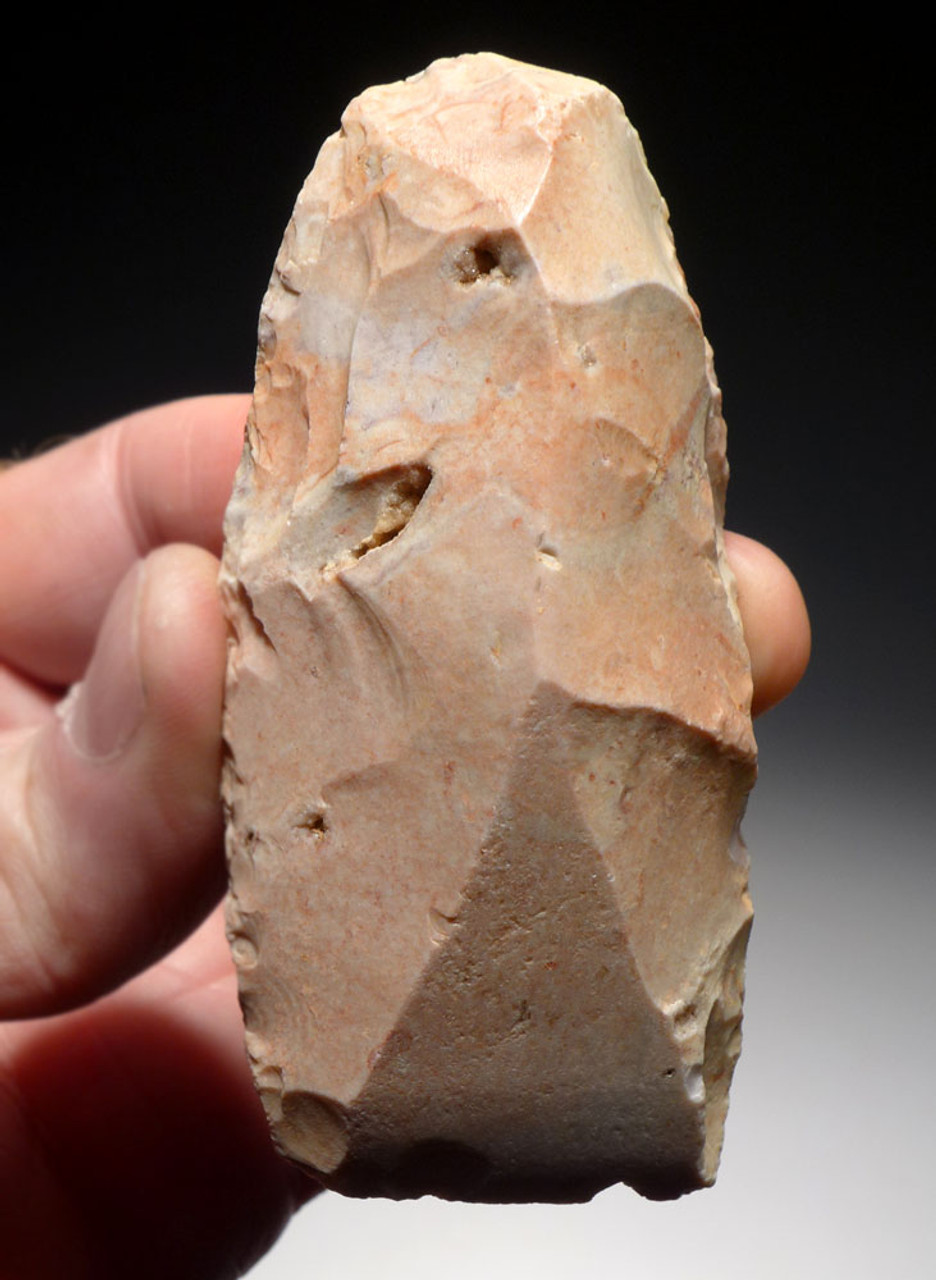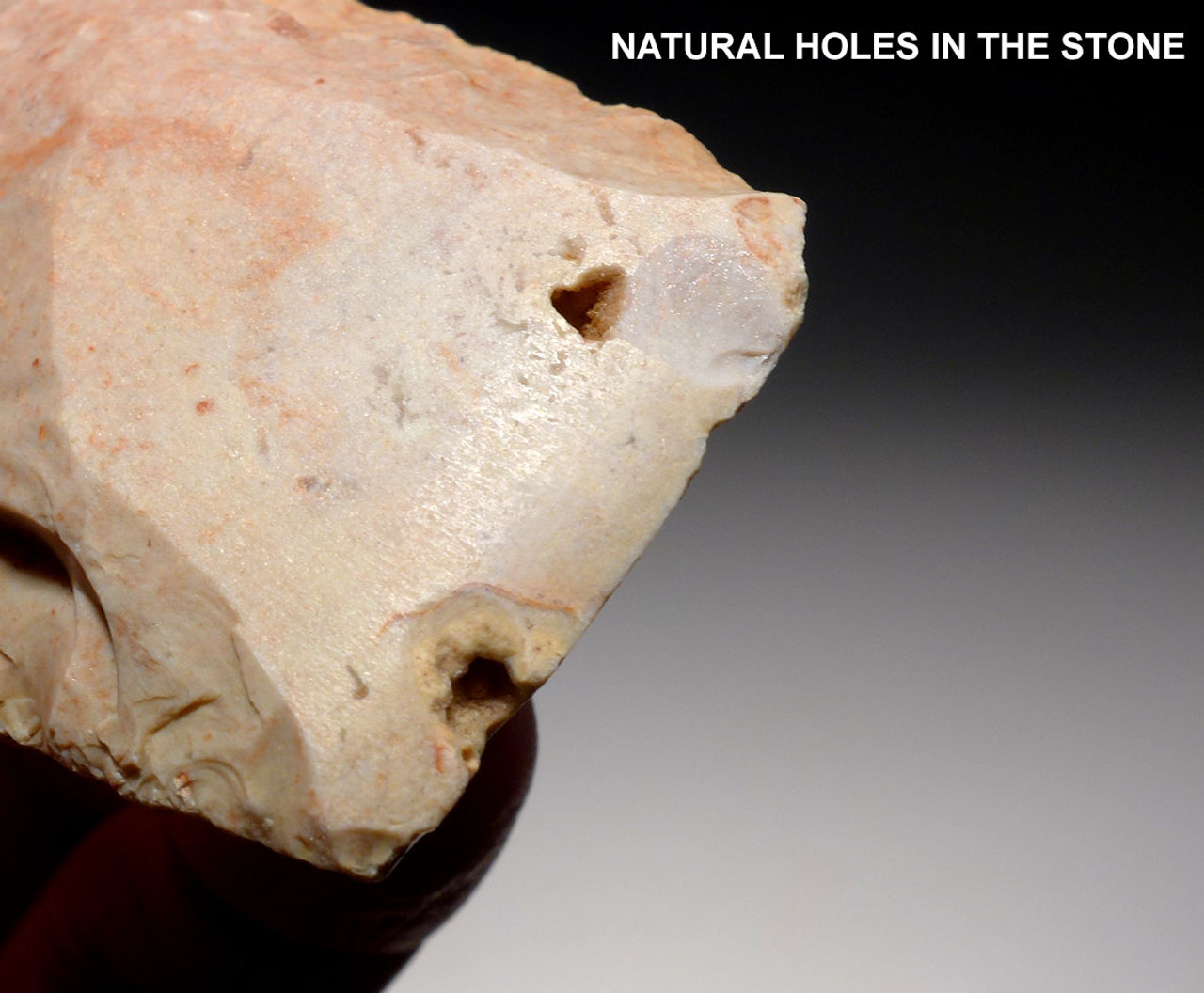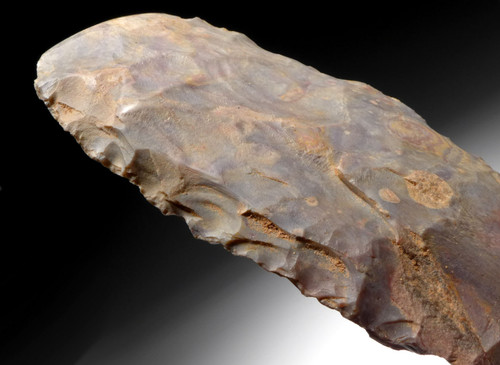Product Description
SEE MORE AFRICAN NEOLITHIC TOOLS AND ARTIFACTS
This BEAUTIFUL African Capsian Neolithic knapped celt axe was found on an exposed African Neolithic site in the Sahara Desert in Northwest Africa. It is made of flint and features a highly unique color combination. This type axe would have been inserted into a wooden handle and further lashed in place to secure it to the shaft. This Neolithic axe was masterfully fashioned by Neolithic humans between 10,000 and 4,700 years ago. It could have served in both a utilitarian role but was most likely a deadly weapon of warfare. By this period in time, the northern Sahara was nearly devoid of trees as the African Humid Period was ending and the phase of desiccation was underway. The use of axes to cut wood became less common compared to the increase in warfare due to a reduction of resources, so the main purpose left for axes of this nature was as a weapon.
Similar to the European Neolithic celt axes, the African Neolithic celt axes were either completely flaked or made by grinding a blank and finishing by knapping. The cutting edge of the axes are also similar to their European counterparts in that they are ground to form a sturdy chopping edge in most cases with some sharpened by only knapping. Specimens like these were hafted in wood or bone handles.
 US DOLLAR
US DOLLAR
 EURO
EURO
 AUSTRALIAN DOLLAR
AUSTRALIAN DOLLAR
 CANADIAN DOLLAR
CANADIAN DOLLAR
 POUND STERLING
POUND STERLING




























